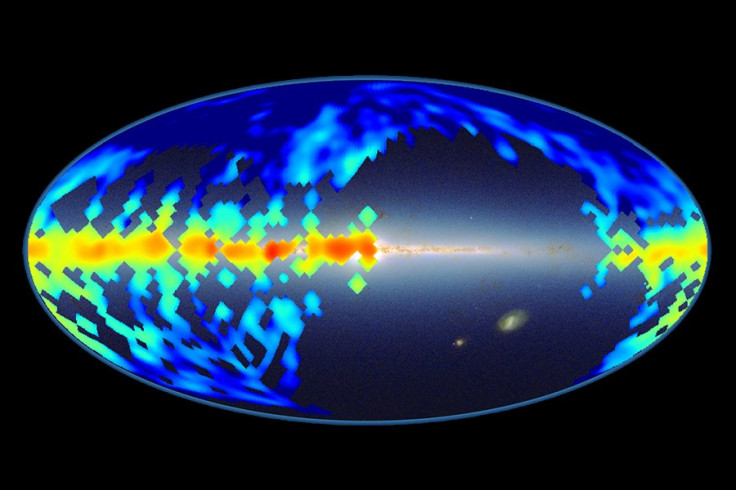Milky Way's mysterious molecules pinned down in location but remain unknown after a 100 years

A map of mysterious molecules in the Milky Way created by Johns Hopkins astronomers shows that these tough molecules exist in a range of environments all over the galaxy.
But the exact nature of these molecules still remain a mystery, even after a hundred years since their discovery.
The scientists who unveiled the map at the 225th meeting of the American Astronomical Society in Seattle are hopeful of cracking the mystery soon.
These molecules are the ones that cause the diffuse interstellar bands (DIBs) or dark lines in the spectrum of distant stars.
First seen by astronomer Mary Lea Heger of Lick Observatory in 1922, the DIBs were shown to be caused by a variety of molecules in the space between. But where exactly the molecules are present and what they are have remained a mystery.
The new map made using data from the Sloan Digital Sky Survey reveals the location of these enigmatic molecules.
Two parallel studies, one that focused on the densest parts of our galaxy using infrared observations to cut through the dust clouds and reach obscured stars, and another that used visible light to detect the mysterious molecules above the plane of the galaxy, were used to make the map.
The team members detected some of mysterious features in front of about 60,000 stars in a wide range of environments and were able to measure the motion of these molecules.
"We do not have a full map yet, but we can already see a lot of interesting patterns," said Brice Ménard, a JHU professor who worked on both teams.
The visible light team analysed light from more than half a million stars, galaxies, and quasars to detect the molecules in the regions well above and beyond the Milky Way's disk. The molecules were found both in dense regions of gas and dust, and lonelier spots far away from stars.
© Copyright IBTimes 2025. All rights reserved.





















